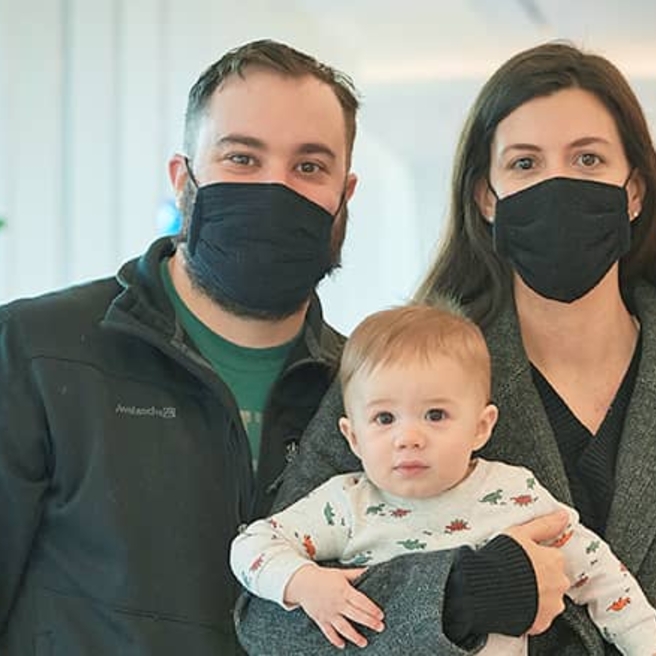Division of Otolaryngology (Ear, Nose and Throat)

At Children's Hospital of Philadelphia (CHOP), children with everyday illnesses and uncommon conditions of the ears, nose and throat are cared for in the Division of Otolaryngology — also known as Ear, Nose and Throat (ENT). We diagnose and treat everything from ear infections (otitis), sore throats, tonsillitis and sinus problems to more complex hearing and speech disorders, airway problems, lymphatic malformations and tumors of the head and neck. No matter the complexity of your child's condition, our goal is the same: your child’s quick return to a healthy childhood.
We practice family-centered care, educating and empowering families to make informed decisions about the most appropriate treatment for their child’s condition.
How we serve you
In addition to caring for everyday illnesses, we collaborate with several other specialists to bring advanced care to children with complex conditions.
Conditions we treat
We care for children with a wide range of illnesses, diseases and anomalies of the ear, nose, throat and neck.
-
Ankyloglossia (tongue tie) -
Benign paroxysmal positional vertigo (BPPV) -
Benign paroxysmal vertigo of childhood (BPVC) -
Branchial cleft abnormalities -
Choanal atresia -
Chronic otitis media (COM) -
Complete tracheal rings -
Dermoid cyst -
Deviated septum in children -
Differentiated thyroid cancer -
Ear tubes -
Foreign bodies in the nose -
Glottic stenosis -
Hearing loss in children -
Hemifacial microsomia -
Juvenile nasopharyngeal angiofibroma (JNA) -
Juvenile recurrent parotitis -
Laryngeal atresia -
Laryngeal trauma -
Laryngomalacia -
Laryngotracheal cleft (LTC) -
Lymphatic malformations -
Mastoiditis -
Meniere’s disease -
Myringoplasty -
Nasal fracture -
Neck abscess -
Neck masses -
Nosebleeds (epistaxis) -
Obstructive sleep apnea -
Otitis externa (swimmer’s ear) -
Otitis media (middle ear infection) -
Otitis media with effusion (OME) -
Preauricular pits -
Pyriform aperture stenosis -
Ranula -
Recurrent respiratory papillomatosis -
Saccular cysts -
Salivary duct stones -
Salivary gland tumors -
Sinusitis in children -
Sternocleidomastoid tumor of infancy -
Stickler syndrome -
Stridor (noisy breathing) -
Subglottic cysts -
Subglottic hemangiomas -
Subglottic stenosis -
Teratomas of the head and neck -
Thyroglossal duct cyst -
Tonsillectomy and adenoidectomy -
Tracheal stenosis -
Treacher Collins syndrome -
Vallecular cysts -
Vertigo (dizziness) -
Vestibular migraine -
Vestibular neuritis and labyrinthitis -
Vocal cord paralysis

Meet your team
Meet the doctors, surgeons, nurses and other staff who will provide comprehensive care for your child in the Division of Otolaryngology.

Our locations
Our pediatric ear, nose and throat specialists provide care at many CHOP care network locations located throughout the region.

Our research
Our team is committed to research that will improve children's airways, voice problems and sleep-related breathing issues. We are a key location for a multi-institution effort to collect genetic data and outcomes for children with hearing loss.

Division of Otolaryngology (Ear, Nose and Throat) resources
We have created resources to help you find answers to your questions and feel confident with the ears, nose and throat care you are providing your child.

Resources for professionals
Everything you need to support your patient’s health, created and updated by our CHOP community of experts.

Gene therapy for deafness
We are proud to announce the initial results of an experimental gene therapy to treat otoferlin gene (OTOF)-mediated hearing loss, a form of hereditary hearing loss. While this is a breakthrough in the treatment of children around the world with hearing loss, and we are encouraged by the initial findings in the research trial, we want to emphasize that this trial is only to treat one very specific rare gene for deafness and the gene therapy is only available through a clinical trial.
Your donation changes lives
A gift of any size helps us make lifesaving breakthroughs for children everywhere.


